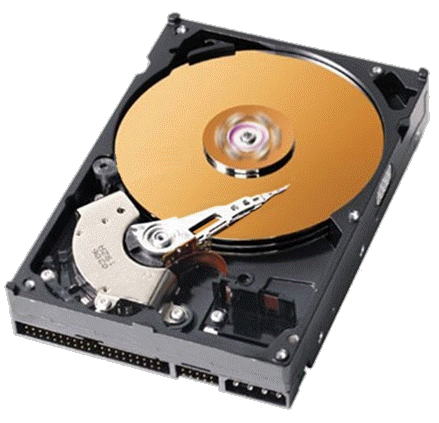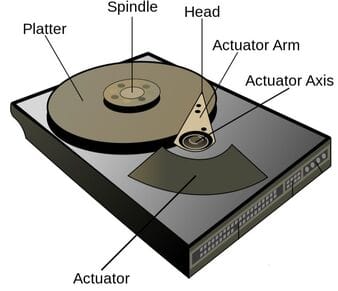A magnetic disk is a storage device that uses magnetization to store and retrieve digital data. It consists of rotating platters coated with magnetic material and read/write heads that access data while the disk spins.

Key Components of a Magnetic Disk:
- Platters – Circular disks coated with a magnetic layer where data is stored.
- Read/Write Heads – Tiny electromagnets that read and write data by altering magnetic polarities.
- Spindle – Rotates the platters at high speeds (e.g., 5400, 7200, or 10,000 RPM).
- Actuator Arm – Moves the read/write heads across the platter surfaces.
- Controller Board – Manages data transfer between the disk and the computer.

Types of Magnetic Disks:
- Hard Disk Drives (HDDs) – Traditional, high-capacity storage used in PCs and servers.
- Floppy Disks – Older, low-capacity removable storage (now obsolete).
- Zip Disks – Higher-capacity removable disks (also obsolete).
How Data is Stored:
- Data is organized in tracks (concentric circles) and sectors (small segments).
- The disk spins, and the read/write head moves to access different tracks.
Advantages:
✔ High storage capacity (up to multiple terabytes in HDDs).
✔ Cost-effective per gigabyte compared to SSDs.
✔ Long-term data retention without power.
Disadvantages:
✖ Slower than SSDs due to mechanical movement.
✖ Susceptible to mechanical failure (e.g., head crashes).
✖ Higher power consumption and noise compared to SSDs.
Modern Usage:
While SSDs (Solid State Drives) are faster and more durable, magnetic disks (HDDs) remain popular for bulk storage due to their lower cost per GB. They are widely used in data centers, backup systems, and budget PCs.
